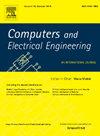FuseNet:基于注意学习的MRI-PET片融合诊断阿尔茨海默病
IF 4
3区 计算机科学
Q1 COMPUTER SCIENCE, HARDWARE & ARCHITECTURE
引用次数: 0
摘要
在寻找更有效的阿尔茨海默病(AD)诊断方法的过程中,将多模态成像技术与先进的机器学习模型相结合具有重要的前景。本研究提出了一种新的诊断框架,将基于离散小波变换(DWT)的MRI和PET图像融合与深度学习架构相结合,以提高AD分类的准确性。我们的模型采用了一个10层卷积神经网络(CNN),增强了通道-空间注意机制,从融合图像中提取显著特征并对其进行优先排序。对于分类,使用了集成深度RVFL (edRVFL),它利用多个RVFL网络的强度来提高鲁棒性和准确性。我们将模型的性能与传统分类器和其他单层前馈网络进行了比较,显示出更高的灵敏度、特异性、精度和F1分数。结果证实了在深度学习环境下将注意力机制与集成学习相结合的有效性,在AD分类中显著优于现有的最先进的方法。建议的模型的源代码可在https://github.com/rsharma2612/Attentive-CNN上获得。本文章由计算机程序翻译,如有差异,请以英文原文为准。
FuseNet: Attention-learning based MRI–PET slice fusion for Alzheimer’s diagnosis
In the quest for more effective diagnostic methodologies for Alzheimer’s disease (AD), the integration of multimodal imaging techniques with advanced machine learning models holds significant promise. This study introduces a novel diagnostic framework that combines Discrete Wavelet Transform (DWT)-based fusion of MRI and PET images with a deep learning architecture to enhance the accuracy of AD classification. Our model employs a 10-layer convolutional neural network (CNN) enhanced with channel-spatial attention mechanisms to extract and prioritize salient features from the fused images. For classification, an Ensemble Deep RVFL (edRVFL) is utilized, which leverages the strength of multiple RVFL networks to improve robustness and accuracy. We compare our model’s performance against traditional classifiers and other single-layer feedforward networks, demonstrating superior sensitivity, specificity, precision, and F1 scores. The results substantiate the efficacy of combining attention mechanisms with ensemble learning in a deep learning context, significantly outperforming existing state-of-the-art approaches in AD classification. The source code of the proposed model is available at https://github.com/rsharma2612/Attentive-CNN.
求助全文
通过发布文献求助,成功后即可免费获取论文全文。
去求助
来源期刊

Computers & Electrical Engineering
工程技术-工程:电子与电气
CiteScore
9.20
自引率
7.00%
发文量
661
审稿时长
47 days
期刊介绍:
The impact of computers has nowhere been more revolutionary than in electrical engineering. The design, analysis, and operation of electrical and electronic systems are now dominated by computers, a transformation that has been motivated by the natural ease of interface between computers and electrical systems, and the promise of spectacular improvements in speed and efficiency.
Published since 1973, Computers & Electrical Engineering provides rapid publication of topical research into the integration of computer technology and computational techniques with electrical and electronic systems. The journal publishes papers featuring novel implementations of computers and computational techniques in areas like signal and image processing, high-performance computing, parallel processing, and communications. Special attention will be paid to papers describing innovative architectures, algorithms, and software tools.
 求助内容:
求助内容: 应助结果提醒方式:
应助结果提醒方式:


